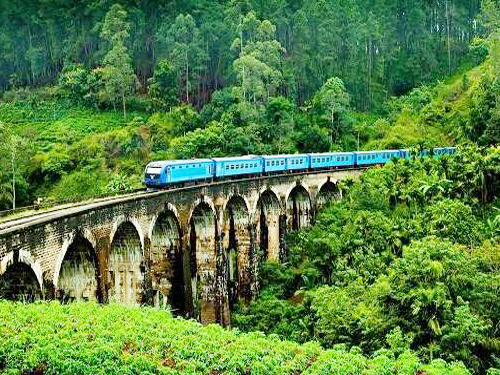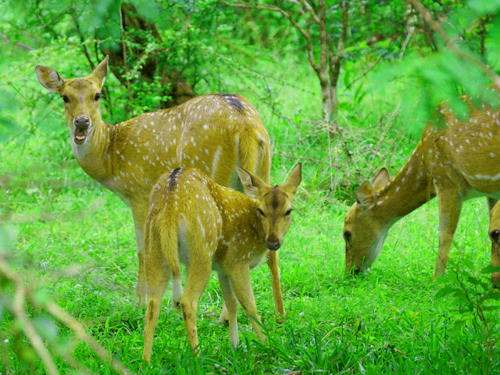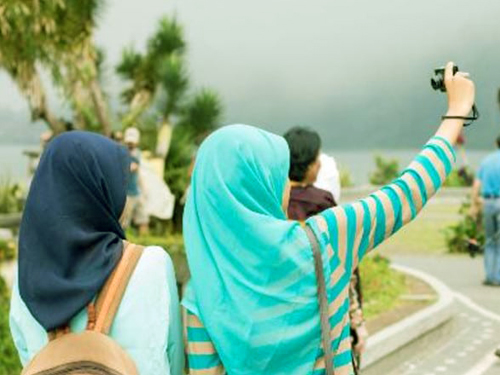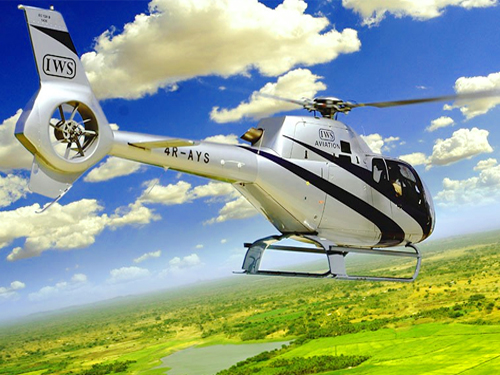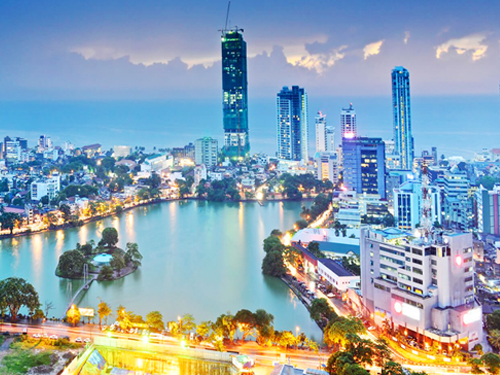Minneriya in Sri Lanka
This area is located in the dry zone of Sri Lanka. It receives an average of 1,500-2,200 millimetres of rainfall (59-79 inches). The park's lowest and highest temperatures are 20.6 degrees Celsius (69.1 degF), and 34.5 degrees Celsius (94.1 degF), respectively. The north eastern monsoon lasts from October to January, while the dry season is from May to September. There are many types of Minneriya habitats: low-canopy montane forest, intermediate high-canopy secondary forest, scrublands and abandoned chena land.
The dry zone is the area that runs from May to September. This is considered the dry season. The north eastern monsoon, which lasts from October through January, is the wet season. There are many types of Minneriya habitats: low-canopy montane forest, intermediate high canopy secondary forest, scrublands and abandoned chena land.
Minneriya, which is located in Sri Lanka's dry zone, receives an average of 1,500-22,000 MM of rainfall. Temperatures range from 20 to 34 degrees Celsius. The tank's primary water sources are the Elaheramadmade canal and the Amban River. The dry season is defined as the period between October and January in the northeastern monsoon, and May to September in the Elahera mad made canal.
Minnerya National Park is best visited between May and September during dry season. This is when animals are drawn to the waterhole. If you wish to see the huge elephant gatherings, however, you should visit between July and September. It is a unique experience to see elephants from nearby locations.
Elephant Migration between Minneriya Eco Park, Kaudulla Eco Park and Hurulu Eco park. Three national parks are located in close proximity to the region. These are the Minneriya National Park and the Kaudulla National Park. These parks are all very popular with both locals and tourists around the globe for their large elephant herds. In general, elephants migrate to Kaudulla National Park in October and November each year due to heavy rains and the swelling of lakes. The elephants then move on to Hurulu Eco Park during the month December to January for their final leg of migration.
From Colombo to Minneriya National Park, it is 182km. The nearest city is Polonnaruwa. It will take approximately 4 hours to travel from Colombo. A car is the best way to reach Minneriya National Park. Stay at Sigiriya, as the national park is just 30 minutes away.
Minneriya covers an area of 8,890 ha and is approximately 4 hours away from Colombo, the capital of Sri Lanka. It is also close to many other attractions. Minneriya is located just 20 kilometres from UNESCO's Polonnaruwa, while Habarana or Sigiriya are both close by. This makes it easy to combine wildlife and cultural experiences in one trip. The park's topography is composed of mixed evergreen forests and scrub, with rocky outcrops and wetlands. This provides a wide range of habitats for a variety of animals.
Gathering elephants is an amazing experience for wildlife enthusiasts and photographers. The water tank is surrounded by small herds of elephants, creating one large mass of elephant grey. It is a wonderful memory to be able to watch the jumbos play, drink, swim, jostle, and hustle. There will be many highlights throughout the trip. The park is not just a place for jumbos. You may also see some of the 24 other mammals that call it home, such as wild boar, wild buffalo, wild boar, porcupine and mongoose. Although leopards are less common than in Yala, they can be found in the park.
Terminaliaarjuna and ManilkaraHexandra are common plants found around the Minneriya tank. Chloroxylonswietenia, Vitexaltissima, Berryacordifolia, Diospyrosquaesita, and Drypetessepiaria are dominant plant species in Minneriya. Randiadumetorum and crotons are found in abandoned chena crops and scrublands. The park contains teak and eucalyptus plants, which were established by the Department of Forest Conservation. Monocots and grasses include Bambusabambos (Phoenix pusilla), Ceylon date palm (Phoenix pusilla), ImperataCylindrica and Panicum maximum.
During the dry season, large numbers of Sri Lankan elephants flock to the grass fields at the reservoir's edges. A large herd is supported by the Minneriya tank. The estimated number of elephants found here is between 150 and 200. Some reports even claim that there are 700. They come from Wasgamuwa National Park to seek shelter and food in the forest. Minneriya is a popular tourist destination, especially during dry seasons.
It is home to the two endangered monkeys of Sri Lanka, the purple-faced langur (endemic) and the toque macaque (endemic). Minneriya is home to rare and endangered species like the Sri Lankan leopard, and the Sri Lankan sloth bear. Minneriya is said to be one of the places where the gray slender Loris is found in Sri Lanka.
Minneriya reservoir is an important habitat to large water birds such as spot-billed pelican, lesser adjutant and painted stork. Reports have shown 2000 little cormorants in flocks. Other water birds include the great white pelican and ruddy turningstone. Sri Lankan hanging parrots, Sri Lankan junglefowls, Sri Lankan brown-capped babblers, Sri Lanka grey Hornbills, Sri Lankan black-crested bulbul, and the Crimson-fronted Barbet are some of the endemic species. This national park has 11 threatened birds.
The area has been home to Polypedatescruciger and Fejervaryapulla amphibians. There are eight species of endemic reptiles, and all of them are considered threatened.Painted-lip lizard and Lankascincusfallax are among them. Other reptiles include the saltwater crocodile and Indian python. The endemic status of Sri Lanka is four of the freshwater fishes that were recorded from Minneriya.
One of the most significant elephant phenomena is found in Minneriya National Park. It's a protected reserve covering 8890 hectares in Sri Lanka's Cultural Triangle. Every year, elephants gather around the Minneriya Tank. This ancient waterbody covers 4670 acres and was built by King Mahasena the "tank-building King". It is an ancient and large waterbody that has existed since the 3rd century. It is located in the middle of the reserve. The tank never runs dry, so elephants can get water from it when other sources are not available.
This phenomenon lasts until October's monsoon, and is called The Gathering. Gehan de Silva Wijerathne from Sri Lanka was the first to coin this term. These magnificent animals have been visited by thousands of people since then. It is home to as many as 300 elephants at any one time. This tank is home to the largest concentration of Asian elephants in the world. Minneriya is part an elephant corridor that links Kaudulla, Wasgamuwa, and other national parks in Sri Lanka’s North Central Region.
The endemic and threatened Slender Wood Frog as well as the Common Tree Frog are two of the nine Amphibian species found in Minneriya National Park. Eight of the 25 species are endemic, including the Red-lipped Lizard. You can also see water and land monitors here. Near the tank, you can see the Mugger Crocodile. The Minneriya reservoir is home to many species of freshwater fish.
Minneriya reservoir is a vital habitat for large waterbirds such as spot-billed pelican, lesser adjutant and painted stork. Minneriya is home to many migrant and resident bird species. Reports have shown that there are 2000 little cormorants in flocks. Other water birds include the great white pelican and ruddy turningstone. Sri Lankan hanging parrots, Sri Lankan jungle fowl, Sri Lankan hanging babbler, Sri Lankan grey hornbills, Sri Lankan black-crested bulbul, and the crimson fronted barbet are some of the endemic species. This national park has 11 threatened birds.
FAQs
Should I visit Minneriya National Park while on holiday in Sri Lanka?
Yes. Yes. Minneriya National Park can be accessed from the cultural triangle most easily. It is highly recommended to spend 1 to 2 nights in Dambuall, Sigiriya, Habarana areas in order to experience the best wildlife safari in Sri Lanka. You will be able create lasting memories. Minneriya National Park is a must-see for anyone on a wildlife photography or bird watching tour to Sri Lanka.
What is the Minneriya National Park Entry Fees?
Sri Lankan Rupees 8,500 (LKR), including taxes, local guide entrance/service charges, etc. For children 6-12 years, Sri Lankan Rupees 3,800 includes taxes/local guide entrance/service charges etc.
Foreign children 0-6 years old are free of charge, provided they are accompanied by their parents.
Notice: These prices reflect the 2022 Januray update. Prices can be modified at any time and without prior notice.
Can I buy Minneriya Entrance Ticket online?
Yes, this facility is available. For more information Minneriya National Park entry ticket online booking
Are Minneriya National Park Entrance Fees in USD possible?
You will need to pay in Sri Lankan Rupees. International currencies are not accepted at Sri Lankan National Parks for entry fees.
What is the price of a safari jeep in Minneriya National Park?
- Half-day safari Jeep hire at Minneriya National Park will cost approximately 40-45 $
- Half-day safari jeep costs at Minneriya National Park 85-90 $
- For a smooth safari in a jeep, contact your Sri Lankan travel agent.
Notice - The price shown is based upon 2022 January rates. Prices may change due to fuel increases / taxes, etc.
How many people can travel in one safari jeep to Minneriya National Park?
Although 6 people can fit in one jeep, it is comfortable enough for 3-4 people.
Is it possible to hire a Toyota or Mitsubishi Jeep for a safari at MinneriyaNational?
Yes. Yes. Although most Safari jeeps made in India are made, there are also Japanese-made Toyota / Mitsubishi models. The Indian-made jeeps will have a slightly higher price.
How can I get a tracker to help me with my Minneriya National Park wildlife safari?
Yes, Department of Wildlife provides a wildlife tracker for each jeep at no cost subject to availability.
Should I tip the safari jeep driver and tracker?
Recommendation: If you are satisfied with the service received, tip tracker & jeep driver.
What should I bring to Minneriya National Park Sri Lanka?
- Recommended colors for light costumes are Green, Beige and Khaki.
- Sunblock / Sunglasses / Lip balm / hat
- Insect repellent
- To improve sightings, binoculars are highly recommended
- Camera accessories, such as spare batteries and memory cards
How many elephants are there in Minneriya?
Minneriya National Park is home to the largest number of Asian Elephants worldwide. The 8,890-hectare park is located within a few kilometers of the Minneriya Tank. It can accommodate 350 elephants. According to some reports, the number of elephants at could be as high as 700.
Are there leopards in Minneriya?
The park is home to 24 species of mammals, including Elephants, Leopards and Sambar Deer.
What animals are in Minneriya National Park?
It's not just a place for jumbos. You might also see some of the 24 other mammals that call the park home, such as toque macaque monkeys, spotted and sambar deer. The park also has leopards, though they are less common than in Yala.
Who built MinneriyaWewa?
The MinneriyaWewa was constructed by the great reservoir builder, Mahasen (276-303) of Anuradhapura.
What district is Minneriya National Park in?
The park provides a dry season food source for elephants that live in the forests of Matale and Polonnaruwa districts.
Who is God of Minneriya?
Mahasen, who was considered a god or deity after the Minneriya reservoir was built, was named MinneriDev (God OfMinneriya). A shrine was built in his honor near the Minneriya reservoir after his death. The remains can still be seen today. Mahasen, who was considered a god or deity after the construction of Minneriya reservoir was completed, was named MinneriDev (God OfMinneriya). A shrine was built in his honor near the Minneriya reservoir after his death. The remains can still be seen today.

 Safe Travels
Safe Travels Français
Français Deutsch
Deutsch עִברִית
עִברִית Italiano
Italiano Nederlands
Nederlands Polski
Polski Pусский
Pусский Español
Español



